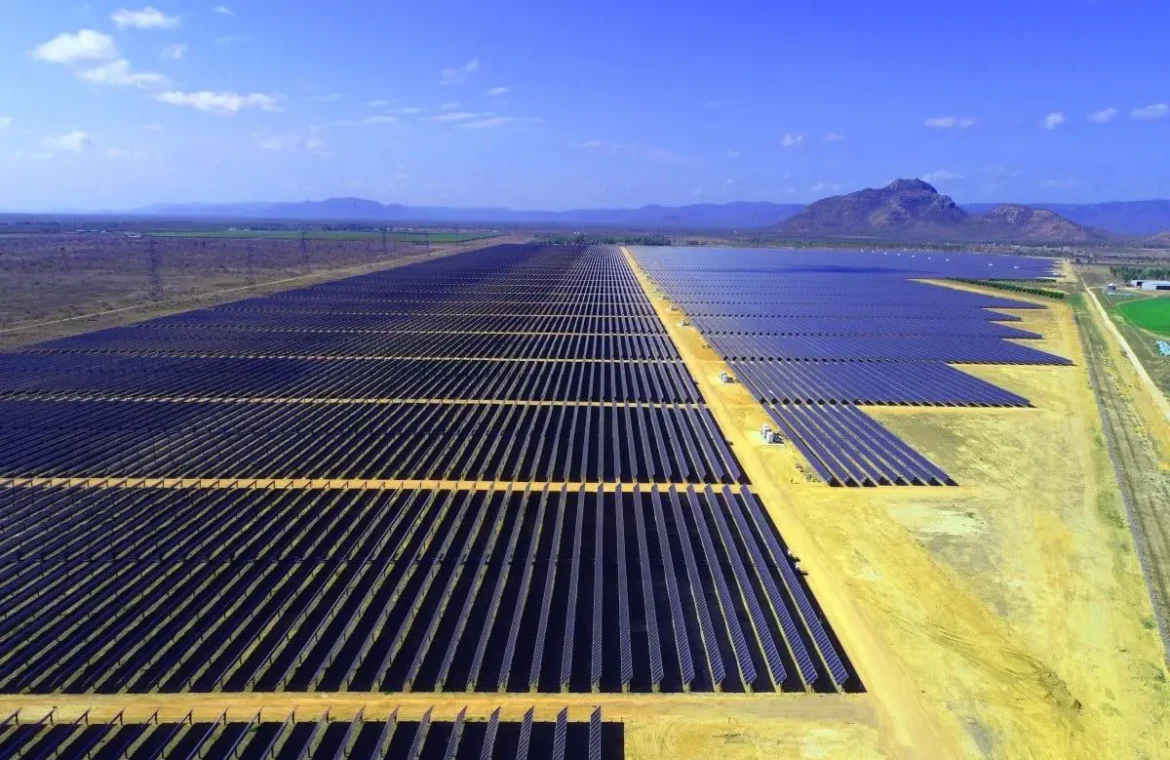Australia has taken a significant step towards becoming a global leader in renewable energy by green-lighting what is set to be the world’s largest solar and battery hub. The massive project, led by SunCable, has been approved by the Australian government and is expected to generate enough energy to power three million homes, with a portion of the energy earmarked for export to Singapore.
A Game-Changing Solar Project
The project, which carries a price tag of USD 24 billion, will be located in Australia’s remote Northern Territory. Spanning 12,000 hectares (29,650 acres), the solar farm will produce a staggering six gigawatts of energy, of which four gigawatts will be used domestically. The remaining two gigawatts will be exported to Singapore via an undersea cable, meeting approximately 15 percent of the city-state’s energy needs.
“This is a landmark moment for renewable energy in Australia,” said Tanya Plibersek, Australia’s Environment Minister. “It will be the largest solar precinct in the world and positions Australia as a global leader in green energy.”
The project, backed by tech billionaire and environmental advocate Mike Cannon-Brookes, aims to begin energy production by 2030. SunCable’s managing director, Cameron Garnsworthy, hailed the approval as a pivotal milestone, stating that the company would now focus on the next stages of planning and development.
Navigating Complex Approvals and Partnerships
Despite this major approval, the project still faces several regulatory hurdles. SunCable will need to collaborate with Singapore’s energy market authority, the Indonesian government, and Australian Indigenous communities to finalize the necessary approvals. The company is targeting a final investment decision by 2027.
Australia’s move towards such a large-scale renewable energy project comes as the country grapples with the effects of climate change, including severe heatwaves, floods, and bushfires. Although Australia is a leading exporter of coal and gas, the nation has been slower than many others in fully embracing renewable energy. In 2022, renewable energy sources accounted for 32 percent of Australia’s total electricity generation, with coal still making up 47 percent.
The Path to Becoming a Clean Energy Powerhouse
Ken Baldwin, Director of the Energy Change Institute at the Australian National University, described the SunCable project as a “world first” in exporting renewable electricity on such a massive scale. He emphasized the importance of continuing this momentum to meet Australia’s net-zero targets by 2050.
“Australia has some of the best solar and wind resources of any country, and as a result, is installing solar and wind at one of the fastest rates of any country in the world on a per capita basis,” Baldwin said. “However, we need to double or triple this investment to stay on track for our climate goals.”
The SunCable project, while impressive, is only a small fraction of what will be needed. By the 2030s, Australia will require around 100 gigawatts of solar and wind capacity to meet its energy needs and fulfill its climate commitments.
Amanda McKenzie, Chief Executive of the Climate Council, called the project a bold step toward making Australia a “clean energy powerhouse.” She stressed the importance of such initiatives in delivering affordable energy and reducing climate pollution.
“With coal-fired power stations closing soon, we need to accelerate the roll-out of solar and storage solutions across all levels—rooftops, large-scale projects, and everything in between,” McKenzie noted.
A Significant Achievement for Mike Cannon-Brookes
This project also represents a major achievement for Mike Cannon-Brookes, co-founder of software giant Atlassian, who has become increasingly involved in the renewable energy sector. His investment in SunCable and other renewable ventures underscores his commitment to making Australia a leader in green energy.
As the world moves towards a more sustainable future, Australia’s approval of this groundbreaking solar and battery farm marks a critical step in the global energy transition, setting the stage for further innovations in the renewable sector.





